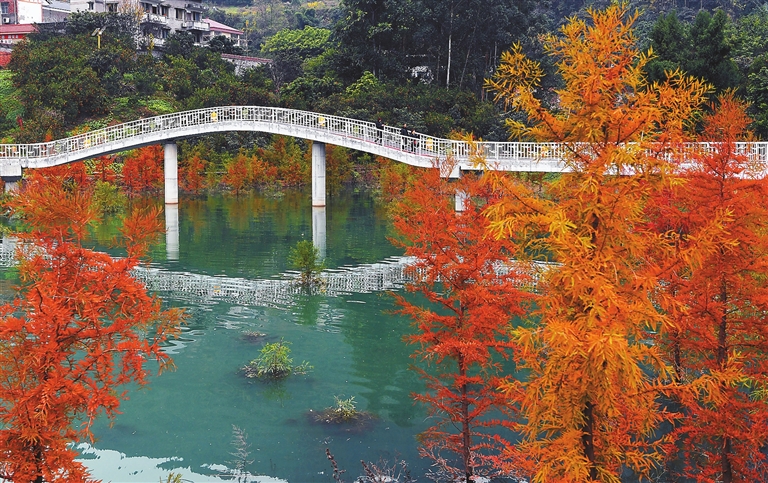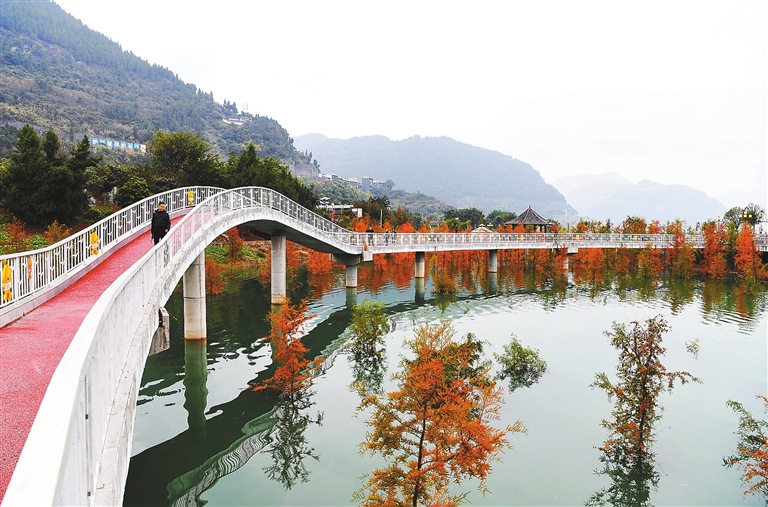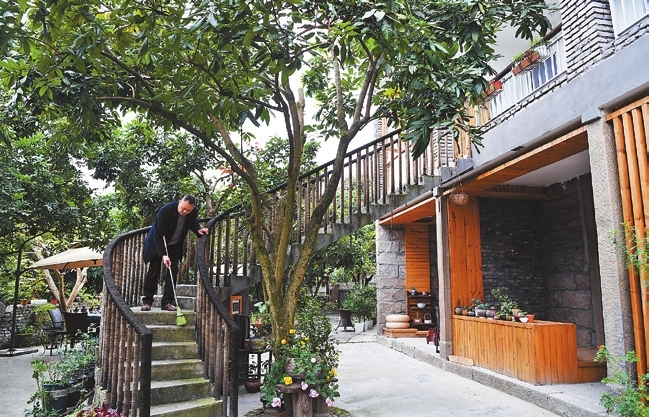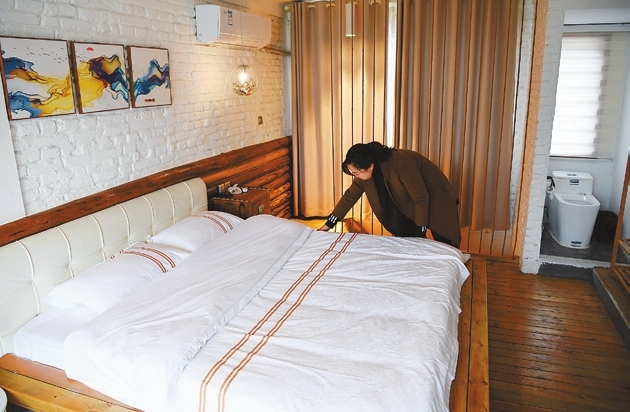



AT the first light of day, Feng Tianqiong gets up to clean her farmyard. She runs an agritainment business and prepares local specialty chaihuoji, or roast chicken cooked on firewood. The 60-year-old farmer welcomes her first guests at 10 a.m., and one hour later, visitors pack out of her farmyard seating area in the Three Gorges reservoir region along the Yangtze River, driving from nearby cities for leisure travel during weekends or holidays. “In the peak season of March and April, I can earn up to 30,000 yuan (US$4,600) a month,” Feng says. Living in Dazhou Township in Southwest China’s Chongqing, she previously managed to eke out a living by farming. In March 2019, Feng opened her agritainment business after the local government built a landmark riverside 10-mile corridor and several tourist attractions. These had gone viral on social media and become hot spots for photo shoots with their picturesque river views. Last year alone, over 200,000 tourists flocked to Feng’s town, spawning the emergence of 30 agritainment businesses and three bed-and-breakfast venues in villages. “It is all thanks to the government’s efforts to boost infrastructure and nurture rural tourism,” Feng says. Feng’s town is among many others in the Three Gorges reservoir region that has ridden the wave of boosted rural tourism. The industry generated total revenue of 850 billion yuan nationwide last year. With more urban dwellers driving to the countryside for leisure on weekends and holidays, local villages have been transforming vacant and old houses into agritainment businesses and B&Bs, aiming to catch up with the sector’s rapid expansion. China’s tourism authority in 2019 issued a circular to make a list of model villages for promoting rural tourism. The circular highlighted the development of rural B&Bs with sound infrastructure and distinctive local cultures in the criteria. China made public 320 villages in the first list in July last year, and 680 more in the second this year. The reservoir region, home to the world’s largest hydropower project, covers about 10,000 square kilometers along the Yangtze River, China’s longest waterway. In 2019, the region, which covers the Yangtze River in Hubei Province and Chongqing, received over 300 million tourists. It resulted in a tourism income of 271 billion yuan. “The Three Gorges reservoir region meets the requirement for building a quality B&B cluster. It boasts rich natural and cultural resources, comprehensive transport means, and tourists numbering in the hundreds of millions,” says Sun Yunlong, deputy director of the department of tourism at Fudan University. Green development is at the top of the agenda, says Lan Guoyi, an official of Dazhou Township. He says the township would tap into the Three Gorges reservoir tourism resources, which would help build it into an enticing rural travel destination. (Xinhua) | 
